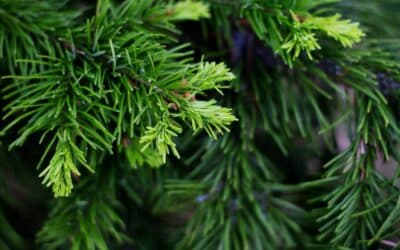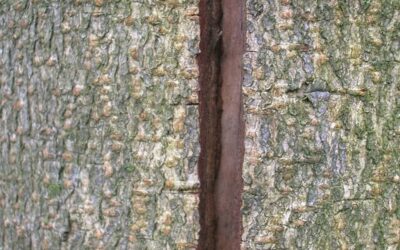Blog Topics
Is there an ideal time to prune trees and shrubs in Northern Virginia? Can you harm your trees if you prune them at the wrong time? What happens if you get the timing wrong?
In this article, you’ll learn:
- The best times to prune specific trees and shrubs
- Which trees and shrubs to prune in spring
- Which trees and shrubs to prune in winter (yes, winter is a good time for pruning!)
- How trees and shrubs react to pruning
- What kinds of pruning to do at other times of year
How Trees and Shrubs React to Pruning Cuts
Each pruning cut you make to a woody plant is a wound that the plant must expend energy to heal. While it’s healing, the plant is vulnerable to attack by damaging insects, fungal pathogens, and diseases.
PRO TIP: Healthy trees and shrubs can usually recover from pruning wounds, regardless of when the pruning is done. However, pruning cuts should be made correctly, with a sharp pruning tool that’s appropriate for the job, and should be limited to no more than roughly 25% of the tree canopy. Improper pruning cuts, torn bark, ragged cuts, and excessive pruning can compromise the health of the tree or shrub.
Woody plants usually react to pruning by putting out new growth. However, that depends on the type of plant being pruned. Many coniferous shrubs and trees will not grow back from a pruning cut. On the other hand, most deciduous trees and shrubs will grow new stems either around the area of the pruning cut or further along the branch.
This new growth requires the tree to expend energy and can lead to declining health if the tree or shrub was stressed, in poor health, or growing in unfavorable conditions before the pruning was done.
Pruning That Can Be Done at Any Time
The following can – and should – be pruned off whenever you notice them, at any time of year:
- dead branches
- diseased branches
- damaged branches
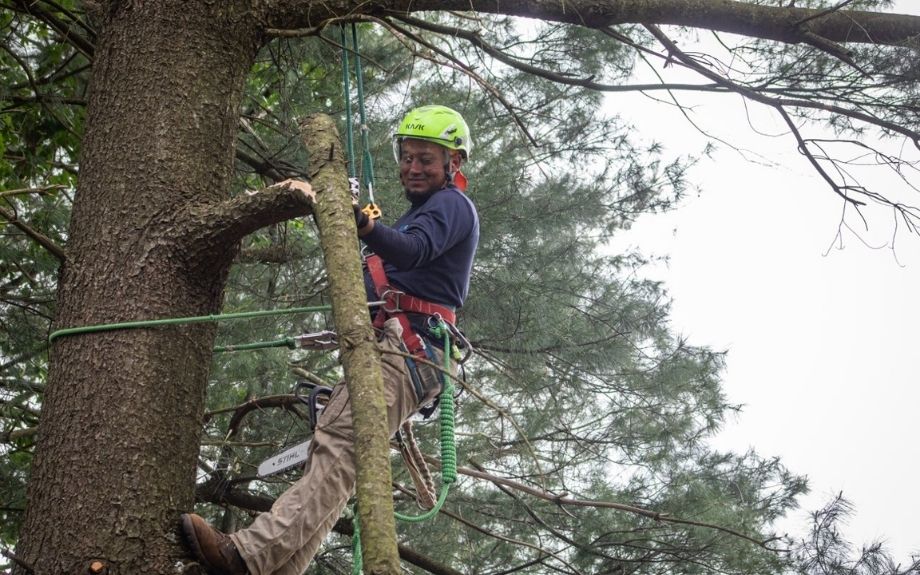
Broken branches, especially those hanging in the tree, should be pruned out ASAP (regardless of the time of year).
When to Prune Flowering Trees and Shrubs
Early Spring Bloomers – Prune May-July
Trees or shrubs that bloom in early spring (before May) put out flowers on what’s called old wood. The flower buds were formed during the previous growing season (in summer or fall) and stayed dormant throughout the winter period as soon as temperatures warm up in spring, these plants burst into bloom.
You’ll probably want to prune early spring blooming trees and shrubs immediately after flowering (roughly May through July). If they are cut back during the dormant season or later in the previous growing season, you’ll be cutting off all the buds for the next spring’s flower display.
There are some exceptions to this timing, such as doing renovation pruning (cutting a shrub down to the ground) to rejuvenate an overgrown shrub that’s no longer blooming as much as it should. Rejuvenation pruning is best done in late winter to minimize the negative effects on the shrub’s health. Yes, you’ll miss a year of flowers but that’s really more of an esthetic issue for us humans; it’s not a problem for the plant.
Common trees and shrubs that bloom in early spring on old wood include:
- Azalea
- Camellia
- Cherry (flowering)
- Daphne
- Forsythia (this is often pruned incorrectly, which is why so many people don’t like this beautiful, vase-shaped shrub – for pruning tips, see this article on how to prune forsythia)
- Hydrangea (early blooming varieties)
- Indian Hawthorn
- Lilac
- Magnolia
- Mockorange
- Plum (flowering)
- Pyracantha
- Quince
- Rhododendron
- Serviceberry
- Spirea (early blooming varieties)
- Viburnum
- Weigela
- Witchhazel
Late Spring and Summer Bloomers – Prune Nov-Feb
For trees and shrubs that bloom late in spring or early in summer, you have more flexibility around when to prune.
Plants that bloom later in the season (usually on new wood produced during the spring) can be pruned in late winter and early spring. Some also benefit from another quick pruning job after they’ve finished flowering.
Some typical examples include:
- Abelia
- Beautyberry
- Butterfly bush (this should be pruned back hard – close to the ground is good)
- Chastetree
- Clethra
- Cotoneaster
- Gardenia
- Hibiscus, Rose-of-Sharon
- Most hydrangeas, especially paniculata (although most hydrangeas do not need much pruning)
- Wisteria (you’ll also need to prune it in the summer)
For more details on when best to prune specific shrubs, see the Shrub Pruning Calendar from the Virginia Cooperative Extension.
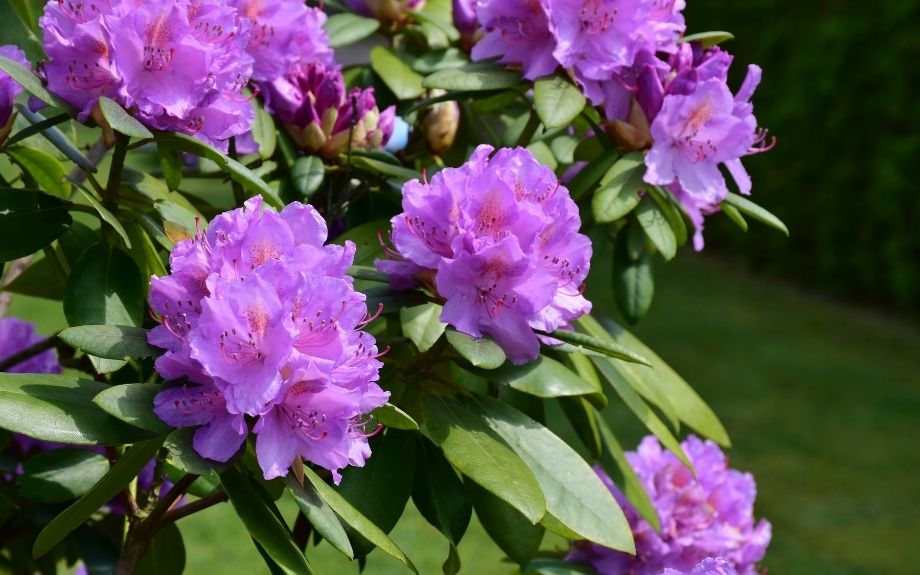
Rhododendrons bloom in spring on old wood. It’s best to prune them after they’ve finished flowering to avoid cutting off next year’s blossoms.
When to Prune Evergreens
Non-coniferous evergreens, such as hollies and boxwoods, are best pruned in the dormant season, roughly November through February.
Common evergreens to prune during the winter in Northern Virginia include:
- Boxwood
- Holly (don’t prune hollies during the growing season or you’ll remove the berries)
- Live Oak
- Southern Magnolia
When to Prune Conifers
While most conifers are low-maintenance plants that require little pruning, some will benefit from occasional light pruning. However, unlike other trees and shrubs, most conifers do not regrow stems and branches that have been cut back to old wood. Before doing any pruning on a conifer, make sure you know exactly what you plan to cut off and why.
The right time to prune a conifer depends on what type of tree or shrub it is. Also, keep in mind that most trimming done to conifers is for corrective reasons, so timing isn’t as important as it is for deciduous plants.
Conifers to Prune in Winter/Early Spring
Because these conifers will not grow new buds on old wood, pruning is best done only on new growth or just before new growth emerges. Don’t cut into old wood (stems with no needles). Instead, lightly cut back the branch tips.
- Arborvitae
- Atlas Cedar
- Chamaecyparis
- Juniper
- Leyland Cypress
- Yew
Conifers to Prune in Mid Spring/Early Summer
Some conifers put out a flush of new growth after pruning. These are best pruned during the growing season to keep them more compact or denser. In our area, that’s roughly April – July, depending on location and weather conditions.
These conifers tend to have whorled branches that form a circular pattern around the growth tip. Between the sets of needles or leaves, you’ll find bare branches. Don’t cut into this area; new growth won’t grow from these inactive stems so you’ll be left with unsightly stubs.
These conifers are best pruned in mid to late spring/early summer:
- Fir
- Hemlock
- Pine
- Spruce
Arborvitae, Deodar Cedar, and Leyland Cypress can also be trimmed back lightly at this time.
When to Prune Fruit Trees
Fruiting trees are often pruned severely in late winter. This type of pruning stresses the plant and causes it to fruit more heavily.
Most fruit trees also benefit from a “cleanup” in summer to remove watersprouts (long, thin branches that grow straight up into the air) and suckers (similar to watersprouts but suckers grow from the base or roots instead of branches).
However, if you have an ornamental cherry, crabapple, or other similar type of tree (that is, you’re not growing it for fruit), pruning in late winter will only result in excessive growth of watersprouts. Instead, wait until mid-July to mid-August to prune these types of trees – you’re least likely to get unsightly watersprouts by pruning in summer.
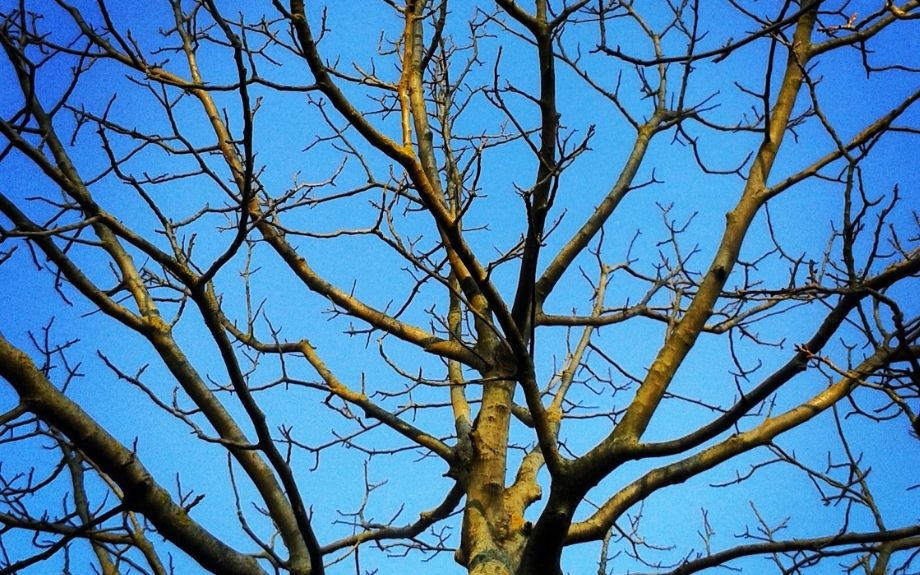
Many deciduous trees are ideally pruned in late winter or early spring while they’re still dormant.
When to Prune Deciduous Trees & Non-Flowering Shrubs
Deciduous Trees & Shrubs to Prune in Late Winter/Early Spring
Trees and shrubs that are grown primarily for their foliage can usually be pruned in late winter/early spring (before growth begins). Common examples include:
- Alder
- Crape Myrtle
- Ninebark
- Sandcherry
- Smokebush
- Stewartia
- Sumac
Maple trees are an exception – they’re best pruned in May-July or November-December to limit excessive sap flow (if you’ve ever parked beneath a recently-pruned maple in spring, you’ll know why they shouldn’t be pruned when sap is flowing!).
Birch, elm, and poplar are also better pruned in winter (rather than early spring) to reduce dripping sap from pruning cuts.
Deciduous Trees & Shrubs to Prune in Summer
- Buckeye
- Cherry (flowering)
- Crabapple
- Dogwood
- Fringe Tree
- Hawthorn
- Horsechestnut
- Magnolia
- Maple
- Peach (flowering)
- Pear (flowering)
- Plum (flowering and purple)
- Redbud
- Serviceberry
For other types of trees, the timing isn’t critical. They can be pruned at any time of year.
For more details, see the Deciduous Tree Pruning Calendar from the Virginia Cooperative Extension.
Should you prune in summer?
While dormant pruning (late winter to early spring) is often recommended, there are plenty of good reasons to prune trees and shrubs in summer.
For example, suckers and watersprouts are best cut out in summer, especially on fruit trees. Overgrown or quick-growing trees, shrubs, and vines (e.g., wisteria) will benefit from a summer “haircut” to open up the canopy, improving air circulation and reducing the risk of fungal diseases. Trees can also be shaped to improve their appearance, open up a view, or correct structural issues.
Need a Hand?
If you’re unsure whether your trees or shrubs need to be pruned, or when the best time is to prune them, give us a call! Our Certified Arborists and landscape professionals can identify your plants, assess their condition, and recommend the best time to prune.
Give Us a Call at 703-402-9366
If you'd like help with your trees or landscape, have any questions, or would like to schedule an appointment with one of our Certified Arborists, please give us a call. We'd love to hear from you!

